James Maliszewski's Blog, page 63
January 5, 2024
Mimic Mysteries
Among the many monsters whose origins can definitively be linked to Dungeons & Dragons is the shapeshifting mimic, which first appeared in the AD&D Monster Manual (1977). Here's Dave Sutherland's illustration of the creature:
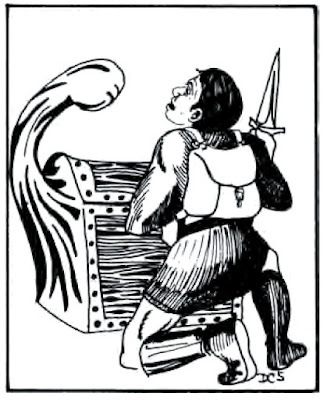 I'm both a fan of mimics in general and of this illustration in particular, because it accurately depicts the mimic punching the nearby adventure. The text of the Monster Manual states plainly that the mimic "lashes out with a pseudopod, delivering 3–12 points of damage per hit." There's no mention, let alone implication, that the mimic can bite its prey.
I'm both a fan of mimics in general and of this illustration in particular, because it accurately depicts the mimic punching the nearby adventure. The text of the Monster Manual states plainly that the mimic "lashes out with a pseudopod, delivering 3–12 points of damage per hit." There's no mention, let alone implication, that the mimic can bite its prey. The illustration accompanying Ed Greenwood's "The Ecology of the Mimic" in issue #75 of Dragon (July 1983) is similarly accurate to the MM description. Indeed, it also includes another detail from the Monster Manual description that is often forgotten: the glue a mimic's skin secretes and that holds its victim fast, thereby making them an easier target to pummel with its pseudopod.
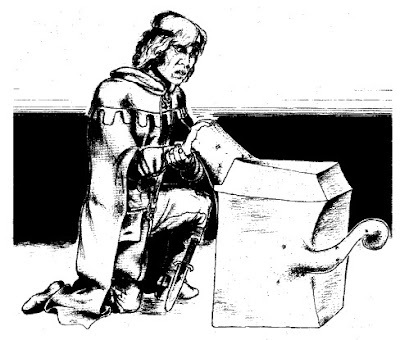 Unless I have missed another example – and please tell me in the comments if I have – the above illustration (by Roger Raupp) is only the second time this iconic D&D monster had been portrayed in artwork. What strikes me about Raupp's illustration (no pun intended) is that it's completely in keeping with the text of the Monster Manual. If anything, it's even truer to the text than Sutherland's original, since it also highlights the creature's sticky qualities.
Unless I have missed another example – and please tell me in the comments if I have – the above illustration (by Roger Raupp) is only the second time this iconic D&D monster had been portrayed in artwork. What strikes me about Raupp's illustration (no pun intended) is that it's completely in keeping with the text of the Monster Manual. If anything, it's even truer to the text than Sutherland's original, since it also highlights the creature's sticky qualities.The next time we get a mimic illustration – again, unless I am mistaken – is volume 2 of the AD&D Second Edition Monstrous Compendium (1989).
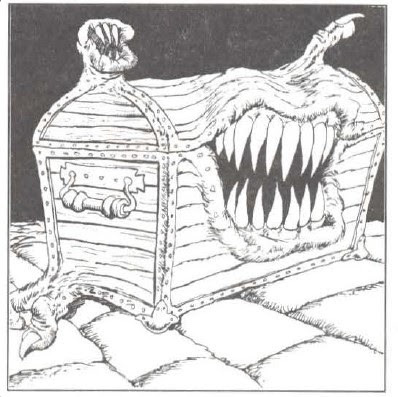 This illustration, by Daniel Horne, interests me for a couple of reasons. Most obviously, this is the first time – if I'm mistaken, you know the drill – a mimic is depicted as having a tooth-filled mouth, though it's notable that the mouth here is not associated with the hinged top of the chest it's mimicking, as is commonplace nowadays. Equally notable are the secondary mouth and clawed finger and foot that also extrude from the monster's body, though I'm not certain what purpose they serve. The 2e written description of the mimic makes no mention of its ability to bite an opponent. Instead, there's still a reference to "lash[ing] out with a pseudopod."
This illustration, by Daniel Horne, interests me for a couple of reasons. Most obviously, this is the first time – if I'm mistaken, you know the drill – a mimic is depicted as having a tooth-filled mouth, though it's notable that the mouth here is not associated with the hinged top of the chest it's mimicking, as is commonplace nowadays. Equally notable are the secondary mouth and clawed finger and foot that also extrude from the monster's body, though I'm not certain what purpose they serve. The 2e written description of the mimic makes no mention of its ability to bite an opponent. Instead, there's still a reference to "lash[ing] out with a pseudopod."For the sake of completeness, here's the illustration of the mimic found in 1993's Monstrous Manual (by an unknown artist, or at least one I cannot identify easily):
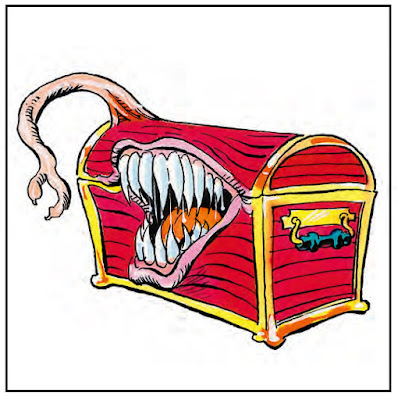 This one looks very similar to and possibly inspired by the one in the 1989 Monstrous Compendium, although it possesses only a single extrusion beyond the tooth-filled mouth. The accompanying text is, so far as I can tell, identical to that of the Monstrous Compendium of a few years previous, right down to its attacking with a pseudopod.
This one looks very similar to and possibly inspired by the one in the 1989 Monstrous Compendium, although it possesses only a single extrusion beyond the tooth-filled mouth. The accompanying text is, so far as I can tell, identical to that of the Monstrous Compendium of a few years previous, right down to its attacking with a pseudopod. What fascinates me is how limited our collective imagination of mimics has become over the years. Gary Gygax's original description of them in 1977 notes that "they are able to perfectly mimic stone or wood" and "pose as stonework, door, chests, or any other substance or item they can imitate." Greenwood's ecology article picks up on this, offering an example of a mimic that had assumed the form of a statue in a market square and then preyed on unsuspecting derelicts on dark nights. By contrast, the Monstrous Compendium description, while retaining the original's ability to mimic stone or wood, states only that "they usually appear in the form of treasure chests."
I won't go so far as to lay the blame for the popular conception of mimics as monstrous chests with big teeth solely on the Monstrous Compendium, though I'm sure it played a role. Rather, I think the fault lies with the simple fact every illustration of the monster from the TSR era of Dungeons & Dragons depicts it as a chest and that's proved a difficult image to shake – so difficult that that's what mimics are for most players of the game. They simply cannot imagine them any other way. Needless to say, I think that's a shame, but what can you do?
January 3, 2024
132
 Today marks the 132nd anniversary of the birth of J.R.R. Tolkien. I don't think it's an exaggeration to say that Tolkien is almost certainly the single most important creator for the subsequent development of the fantasy genre as it has come to be widely understood – no small feat for an Oxford don specializing in Anglo-Saxon language and literature!
Today marks the 132nd anniversary of the birth of J.R.R. Tolkien. I don't think it's an exaggeration to say that Tolkien is almost certainly the single most important creator for the subsequent development of the fantasy genre as it has come to be widely understood – no small feat for an Oxford don specializing in Anglo-Saxon language and literature! Usually, on these occasions, I try to find some novel way to celebrate the occasion, but, after so many years of doing so, I must admit that it's become harder and harder to write something that has not already been written dozens of times beforehand and often more eloquently. That's why, this year, I will simply state that my own life has been inestimably enriched since I first read The Lord of the Rings in 1980. For that reason, I am forever grateful to Professor Tolkien, as, I suspect, are the countless others who have enjoyed his tales of Middle-earth over the decades.
Aur Onnad Meren!
January 2, 2024
The Big Heist
I wrote a post at the beginning of last month in which I mused about the limited pop cultural footprint of Dungeons & Dragons as a game during the heyday of its original faddishness. My point was not that pop culture during the late '70s through the mid-1980s was entirely devoid of nods to the existence of D&D (or roleplaying games more generally), but rather that exceedingly few of those nods showed how D&D was actually played – or indeed made even a weak attempt to show it as a game at all. After the appearance of that post and the one on Labyrinth, I received quite a few emails from readers who directed me toward other movies or TV shows in which Dungeons & Dragons – or D&D products – appeared. I'm grateful for those pointers, since there are undoubtedly many examples of this phenomenon of which I was unaware.
A good case in point is the fifth episode of the fourth season of Diff'rent Strokes, which aired on November 26, 1981. The episode, entitled "The Big Heist," doesn't really involve D&D in any way, but it does feature a number of D&D and AD&D products in plain sight.
 On the display rack to the right, you can clearly see the covers of the three AD&D ruleboks, the Players Handbook, the Dungeon Masters Guide, and the Monster Manual. Located between the PHB and the DMG is what appears to be a D&D Expert Set. What's on the bottom shelf is unclear, at least to my aged eyes. Here's another still that much more clearly shows the middle shelves of the rack.
On the display rack to the right, you can clearly see the covers of the three AD&D ruleboks, the Players Handbook, the Dungeon Masters Guide, and the Monster Manual. Located between the PHB and the DMG is what appears to be a D&D Expert Set. What's on the bottom shelf is unclear, at least to my aged eyes. Here's another still that much more clearly shows the middle shelves of the rack.
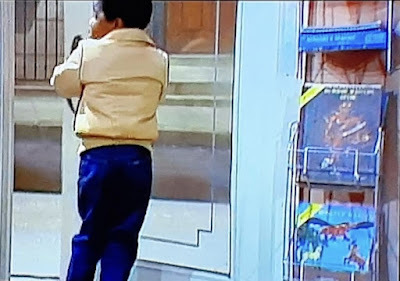 I doubt I ever saw this episode when it was aired. If I did, I certainly had forgotten about it until readers alerted me to its existence. Looking at it now, I find it striking just how clearly these products are all displayed. Of course, I can't help but wonder how identifiable they'd have been to anyone who was casually watching the show. Perhaps some children might have recognized them, but would anyone else have known what they are? I'm skeptical.
I doubt I ever saw this episode when it was aired. If I did, I certainly had forgotten about it until readers alerted me to its existence. Looking at it now, I find it striking just how clearly these products are all displayed. Of course, I can't help but wonder how identifiable they'd have been to anyone who was casually watching the show. Perhaps some children might have recognized them, but would anyone else have known what they are? I'm skeptical.It's a very strange thing. TSR was doing terrific sales on Dungeons & Dragons throughout this period. The game was a huge fad – and yet it had only the tiniest toehold in the wider popular culture. I've theorized that this is due to the fact that pop culture is generally made not by people close to the age of those who consume its products but by people a generation or more older than them. That's why, for example, the Marvel comics of the 1960s, while ostensibly written for the children and teenagers of that time, were in fact much more reflective of the world in which its creators grew up, which is to say, the 1930s and '40s. Consequently, it would take until the '90s at the earliest before the people who actually played RPGs during their heyday would become pop cultural tastemakers, which is precisely when we start to see more examples of roleplaying games in movies and TV shows.
At least, that's my theory. Perhaps you have alternative explanations.
January 1, 2024
Happy New Year
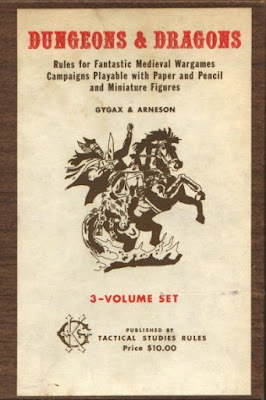 Somehow, another year has come and gone and, while I wouldn't go so far as to say 2023 was a bad year for me, it certainly was a frustrating one, filled with numerous unwelcome distractions that prevented my completing almost any of the projects I hoped I might. Rather than dwell on that, I plan instead to look upon 2024 as filled with possibility, including the possibility that I'll do this year what I was unable to do last year.
Somehow, another year has come and gone and, while I wouldn't go so far as to say 2023 was a bad year for me, it certainly was a frustrating one, filled with numerous unwelcome distractions that prevented my completing almost any of the projects I hoped I might. Rather than dwell on that, I plan instead to look upon 2024 as filled with possibility, including the possibility that I'll do this year what I was unable to do last year. To that end, you'll probably be seeing an increase in posts about the development of Secrets of sha-Arthan. I've been working on it on and off for the last two and a half years. Lots of progress has been made, but there's still a lot more to do. Because this is a passion project without any specific end goal, there's been no real incentive to finish it according to a schedule. Though that's still largely true, I very much do want to see it finished, at least in draft form, before the conclusion of this year (preferably sooner). Posting about it publicly might help me to do that, so I beg your continued indulgence as I do so.
2024 is also the half-century anniversary of the release of original Dungeons & Dragons and I plan to devote quite a bit of commentary to the game that started it all throughout the year. Though I am not presently playing OD&D, I have a particular affection for this edition of D&D, because it's the one that served as my gateway to what would eventually come to be known as the Old School Renaissance, which would, in turn, serve as the impetus to start this blog. Consequently, it's only right that OD&D should once again take center stage here at Grognardia, as I hope it will in the wider world of roleplaying.
Until then, I'd like to wish everyone a happy and fun 2024. Fight on!
December 24, 2023
Merry Christmas!
December 19, 2023
Hidden Details
Because of my post about the limited pop cultural footprint of Dungeons & Dragons as a game, several readers pointed me toward the image below, which I've enlarged as much as I could. It's a still from the 1986 Jim Henson-directed, George Lucas-produced, and Terry Jones-penned fantasy movie, Labyrinth.
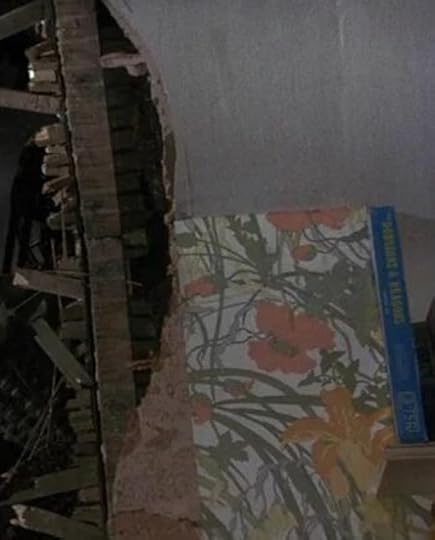 In case it's not clear from the image above, there's a copy – seemingly still in shrinkwrap – of the 1981 David Cook/Steve Marsh Expert Set on a bookshelf in the film. I've admittedly not seen the movie recently, but I suspect this is a blink-and-you'll-miss-it moment rather than something that's given any prominence. Certainly, no one in the movie plays D&D or even references it in any way, so I'm not at all convinced that it's particularly relevant to the point of my earlier post. I imagine it's more likely a case that someone on Labyrinth's production team thought the box "looked cool" and then placed it on the set. I doubt anyone before the advent of high-resolution home video even noticed it; I certainly didn't.
In case it's not clear from the image above, there's a copy – seemingly still in shrinkwrap – of the 1981 David Cook/Steve Marsh Expert Set on a bookshelf in the film. I've admittedly not seen the movie recently, but I suspect this is a blink-and-you'll-miss-it moment rather than something that's given any prominence. Certainly, no one in the movie plays D&D or even references it in any way, so I'm not at all convinced that it's particularly relevant to the point of my earlier post. I imagine it's more likely a case that someone on Labyrinth's production team thought the box "looked cool" and then placed it on the set. I doubt anyone before the advent of high-resolution home video even noticed it; I certainly didn't.I wouldn't be surprised to discover that there are other movies and TV shows from the 1980s that feature, as background details, Dungeons & Dragons and RPG-related paraphernalia. However, I don't believe their number would be very large, or else they'd be better known. I know that, when I was a kid, I made a big deal out of even the flimsiest connections to my beloved hobby. If there are more instances like this out there, they must be very well hidden indeed.
Gygax on a D&D Movie
In issue #13 of Polyhedron talks briefly about the status of a supposed Dungeons & Dragons movie. Three years earlier, the topic comes up in an interview with Gary Gygax in the September 1980 issue of Fantastic Films. What he has to say is actually quite interesting, especially in light of my own feelings about a D&D movie.
 Reading this, two things stand out to me. First is Gygax's reference to The Hobbit as a good template for "a fantasy quest." That's no surprise really, since Gygax was quite open about his enjoyment of The Hobbit (in contrast to The Lord of the Rings, which he found dull). Still, it's additional fodder for the never-ending discussion the extent of Tolkien's influence over D&D, if that's something you enjoy. Second is Gygax's accurate assessment of his ability to write dialog, which suggests a level of self-awareness lacking in many creators – not that it stopped him from trying his hand at fiction writing anyway.
Reading this, two things stand out to me. First is Gygax's reference to The Hobbit as a good template for "a fantasy quest." That's no surprise really, since Gygax was quite open about his enjoyment of The Hobbit (in contrast to The Lord of the Rings, which he found dull). Still, it's additional fodder for the never-ending discussion the extent of Tolkien's influence over D&D, if that's something you enjoy. Second is Gygax's accurate assessment of his ability to write dialog, which suggests a level of self-awareness lacking in many creators – not that it stopped him from trying his hand at fiction writing anyway.
Khlûl'-hloo
... the word is supposed to represent a fumbling human attempt to catch the phonetics of an absolutely non-human word. The name of the hellish entity was invented by beings whose vocal organs were not like man's, hence it has no relation to the human speech equipment. The syllables were determined by a physiological equipment wholly unlike ours, hence could never be uttered perfectly by human throats ... The actual sound – as near as human organs could imitate it or human letters record it – may be taken as something like Khlûl'-hloo, with the first syllable pronounced gutturally and very thickly. The u is about like that in full; and the first syllable is not unlike klul in sound, hence the h represents the guttural thickness.
Thus spake H.P. Lovecraft in his letter to Duane W. Rimel (July 23, 1934), regarding the proper pronunciation of the Great Old One, Cthulhu.
Polyhedron: Issue #15
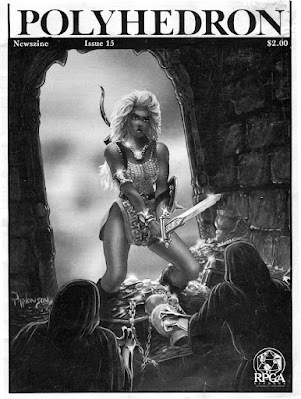 Could the cover of issue #15 of Polyhedron (December 1983) by Keith Parkinson be any more 1980s if it tried? Like most recent issues, the illustration depicts a character from the "Encounters" feature, in this case an 8th-level Dungeons & Dragons fighter named Edrie Solo. Edrie is the player character of Randy Solo (no relation), who was the second-place winner of the RPGA membership drive announced all the way back in issue #3. His prize included an illustration of his character by his favorite artist (Parkinson), as well as a brief scenario involving her, written by James M. Ward. My teenage self thought that was a pretty cool prize – and it is.
Could the cover of issue #15 of Polyhedron (December 1983) by Keith Parkinson be any more 1980s if it tried? Like most recent issues, the illustration depicts a character from the "Encounters" feature, in this case an 8th-level Dungeons & Dragons fighter named Edrie Solo. Edrie is the player character of Randy Solo (no relation), who was the second-place winner of the RPGA membership drive announced all the way back in issue #3. His prize included an illustration of his character by his favorite artist (Parkinson), as well as a brief scenario involving her, written by James M. Ward. My teenage self thought that was a pretty cool prize – and it is.
The issue marks the department of Kim Eastland as publisher of Polyhedron, a role he took over from Frank Mentzer about a year and a half prior. Eastland is, for me anyway, one of the more mysterious members of TSR's staff. I remember his name, but, until I started re-reading Polyhedron, I don't think I could have told you what he did at the company. Looking back over his credits, he wrote or contributed to a number of modules for TSR RPGs throughout the '80s, though, as I said, until I made the effort, I don't think I could have recalled any of them. That probably says more about my aging memory than it does about him.
Issue #15 also marks the end of the RPGA catalog as part of Polyhedron. Apparently, like me, many readers felt that it took up too many pages that could have been more profitably used for gaming content. From this point on, all RPGA merchandise was sold exclusively through the Dungeon Hobby Shop in Wisconsin. I remember this shift, because I suddenly started receiving a copy of the DHS catalog in the mail a couple of times a year. I adored the catalog, because it included both gaming products I'd never heard of before and those I of which I had heard but never seen in the wild. I wish I still had my copies, because I suspect they'd be a treasure trove of information and nostalgia.
The letters page is mostly ephemera, but one letter and its response stood out:
 While I don't doubt the sincerity of the response, I nevertheless find it odd, because, so far as I can recall, no other periodical, then or now, includes copyright or trademark symbols when printing the name of a product that's under legal copyright. As a practice, it's something I only ever recall seeing in TSR's '80s-era magazines and publications. I really can't fathom who advised TSR to undertake this approach, because it's absolutely obnoxious.
While I don't doubt the sincerity of the response, I nevertheless find it odd, because, so far as I can recall, no other periodical, then or now, includes copyright or trademark symbols when printing the name of a product that's under legal copyright. As a practice, it's something I only ever recall seeing in TSR's '80s-era magazines and publications. I really can't fathom who advised TSR to undertake this approach, because it's absolutely obnoxious."Dispel Confusion," as always includes a wide variety of questions about all of TSR's roleplaying games. The only one that really caught my attention was the following, since it pertained to a favorite adventure of mine.
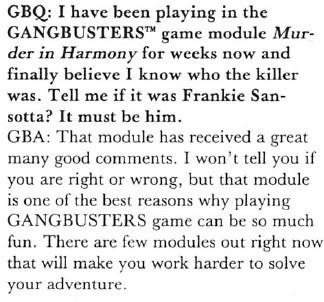 As I stated in my original retrospective post about Murder in Harmony, its central mystery is difficult to unravel, but it's far from impossible. I find it amusing that someone actually bothered to write into Polyhedron, hoping that author Mark Acres would confirm the identity of the murderer.
As I stated in my original retrospective post about Murder in Harmony, its central mystery is difficult to unravel, but it's far from impossible. I find it amusing that someone actually bothered to write into Polyhedron, hoping that author Mark Acres would confirm the identity of the murderer."The AD&D Game Exam" by Philip Meyers is a reprint of an article that originally appeared in issue #47 of Dragon. Polyhedron editor Mary Kirchoff mentioned earlier in this issue that she'd be reprinting articles from Dragon that would otherwise never seen reprinting in, say, The Best of Dragon anthologies, no doubt in order to find more material to fill the 'zine's pages now that the RPGA catalog had been removed. The exam presented in the article is pretty tough, bordering on the obsessive in my opinion. I consider myself pretty knowledgeable about AD&D, but many of the questions asked here are beyond my feeble intellect.
"Do It Yourself" by Roger E. Moore tackles solo adventuring in AD&D. Like all of Moore's articles, this one is pretty good, touching on a lot of matters that are of relevance to its subject. Moore spends time discussing arena combat, dungeon delving, and wilderness adventures as options. In each case, he provides not only ideas for how to proceed but points the reader toward existing tools, like the random tables in the Dungeon Masters Guide, that would be of assistance. He also, wisely, I think, suggests that characters used in a solo campaign should not be integrated into a "regular" campaign, because of the differences in style and outcome. I suspect many solo characters acquired a much more impressive array of magic items, for example, than would be typical in a well-refereed multi-player campaign.
Moore returns with an installment of "Notes for the Dungeon Master" aimed at high-level adventures. Again, lots of solid and useful advice here. Though I rarely had the opportunity to make use of any of his suggestions, I nevertheless recall wishing I could have, because he made high-level adventures sound like fun. I also recall the article for its delightful accompanying illustration by Larry Elmore:
 To this day, I make references to Sir Kay Mardt from time to time. No one else seems to know what I'm talking about.
To this day, I make references to Sir Kay Mardt from time to time. No one else seems to know what I'm talking about."Mas Day in New Hope" is a bit of Christmas-themed nonsense for Gamma World by James M. Ward. The scenario involves an "X.M.A.S. Unit" – a robotic Santa Claus with a grav sled pulled by similarly robotic reindeer – that's been modified to act as a weapon of mass destruction attacking a peaceful village. As I said, it's nonsense but amusing enough, if you're in the right frame of mind. "House Rules In" by Mike Carr looks briefly at some Dawn Patrol rules variants that players might find useful. Carr notes that house rules are often the test bed for eventual rules changes, so there's nothing inherently wrong with them, so long as all the players are on board with them.
There are two Gangbusters articles in this issue, starting with "The Vesper Investigation" by Antonio O'Malley. This is a short, two-page scenario intended for one to three private investigator characters. Ostensibly an investigation into the disappearance of a young woman's uncle, the adventure turns into more than that – including, possibly, a ghost story. David Cook's "Casin' the Joint" looks at sources of literary inspiration for Gangbusters games, particularly pulp novels. Among those he suggests are the stories of Doc Savage and other globetrotting heroes, like the Shadow and the Spider. Taken together, the two articles point toward an alternate future where Gangbusters broadened its subject matter to include a wider range of interwar subject matter, not just cops and robbers.
"Cash & Carry for Cowboys" by Glenn Rahman is another reprint from Dragon, in this case issue #54. The article is a listing of historical prices for various items not listed in the equipment list for Boot Hill. I love articles of this sort, especially so back before the Internet made it possible to find this sort of information with relative ease. Finally, there's Merle Rasmussen's "College Courses and Vital Statistics," which presents a series of courses Top Secret agents can attend – and their costs and the time required to do so. These courses increase an agent's skills and abilities once completed. I've always liked the idea of characters undertaking training in-game to improve themselves, so this article had defnite appeal for me. I wish I'd had the chance to use it when I last played the game.
Polyhedron continues to transition into something. Based on various comments in this issue, it's clear that, like me, a lot of its readership wanted to see more gaming material in its pages rather than updates about conventions and other RPGA activities. At the same time, it's also clear that the 'zine's staff was not prepared for this shift in focus, hence the reprinting of Dragon articles to pad out its page count. As I recall, the staff eventually gets the balance right and Polyhedron became something quite good and distinctive. How long that process takes is something I'm keen to see, as I continue to re-read these issues from my youth.
December 18, 2023
The Streets of da-Imer
Last week, I shared part of a larger illustration depicting the Armies of the King-Emperor of da-Imer, as drawn by Zhu Bajiee. I thought I'd follow it up today with part of a tableau depicting some "ordinary" people one might encounter in the streets of the First City.
 On the lefthand edge, there's a spice merchant, her head bowed in deference to the noble lady sampling her wares. The lady belongs to the Arta Char dynasty, an ancient lineage that, unlike many others, welcomed Magdor's accession to the Solar Throne and were rewarded for their support. Next, there's a senior priest of Vulas, goddess of commerce and wealth, offering alms to one of da-Imer's many impoverished youths. Vulas is an imported Chomachto deity whose priests have attempted to curry favor with the Ironian population through ostentatious acts of charity (to limited success). The priest depicted here wears a prayer plaque and carries an unlit candle-staff as badges of his office.
On the lefthand edge, there's a spice merchant, her head bowed in deference to the noble lady sampling her wares. The lady belongs to the Arta Char dynasty, an ancient lineage that, unlike many others, welcomed Magdor's accession to the Solar Throne and were rewarded for their support. Next, there's a senior priest of Vulas, goddess of commerce and wealth, offering alms to one of da-Imer's many impoverished youths. Vulas is an imported Chomachto deity whose priests have attempted to curry favor with the Ironian population through ostentatious acts of charity (to limited success). The priest depicted here wears a prayer plaque and carries an unlit candle-staff as badges of his office.
James Maliszewski's Blog
- James Maliszewski's profile
- 3 followers




